
Writing about the martyrs is a little daunting when I reflect on my own numerous infidelities to the Lord, even under the most trivial of social pressures. To use a phrase in English, I cannot “hold a candle” to giants like St. Thomas More and Maximillian Kolbe. And yet, while I cannot “hold a candle” in terms of matching their fidelity, there is another way in which I can. The phrase “to hold a candle” comes from an era before electric or gas lighting, when an apprentice would hold a light over his master’s work in order to illuminate it. The hope being, that he, and other apprentices, might learn and imitate. This I can do.
In doing this, I intend to use both images and anecdotes, and to focus mostly on the martyrs of the modern era. It is very important to personalize the story of the martyrs precisely because so many of those who died for the faith in the past hundred years are faceless and story-less. This is necessarily the case in an era where the power of the State has become so persuasive that it can (and often did) make people simply disappear. Indeed, in Latin America there is a class of people referred to as “the disappeared.”
The second reason to “get personal” rests upon the important place the martyrs hold (in subordination to Christ) as co-redeemers; in the words of Tertullian, “the blood of the martyrs is the seed of the Church.”1 God could, of course, save us without our needing to remember what He has done for us. Yet, He prefers to work along the grain of human nature. This is what we mean by anamnesis: the promotion of salvation by remembering the redeeming works of Christ. Similarly, it seems to me, that Christ furthers the co-redemptive work of the martyrs when we remember what they did. This is surely the reason why the particular Churches and religious orders rightly make so much effort to record accurately and in detail the story of their martyrs.
What is a martyr?
The first question we need to answer is, “what precisely is a martyr?”

1. Sr. Consuelo Chuidian, d. 1983
Sr. M. Consuelo Chuidian died in the shark-infested waters off the coast of the Philippines in 1983. She, and three of her companions, were aboard The Cassandra, heading to Cebu city for their annual retreat. She never arrived because the boat, with hundreds of people on board, capsized. Sr. Chuidian and her companions heroically and knowingly laid down their lives for other passengers by organizing the distribution of life jackets, taking nothing for themselves.
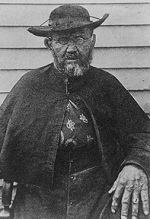
2. Damian de Veuster, d. 1889
Odium fidei
Sr. Chuidian may well be a saint; she is undoubtedly a heroine; however, by the normal criteria of the Church, she is not a martyr. The fact is that it takes two to form a martyr: there needs to be the virtue of the martyr certainly, but there needs also to be the cruelty of the tyrant. Only when these two factors—odium fidei and testimonium fidei—come into contact, violent contact, do we have martyrdom. For a similar reason, while we venerate the heroic love of Fr. Damian of Molokai (De Veuster), who died ministering to the lepers of Hawaii, we do not call him a martyr but rather a confessor. It makes no sense to accuse the sharks of the South China Sea, or the bacteria that causes Hansen’s Disease, of bearing animosity towards the faith.
Considering the martyrs of the last one hundred years, the three main sources of odium fidei are Islam, the militant atheism of Communism and Marxism, and National Socialism. Islamic persecution “bookends” the century with the Armenian genocide of 1915, and a vigorous process of forced Islamification in Sudan in the 1990’s. Added to this, of course, is the recent menace of Jihadism. Yet, in terms of sheer numbers, atheism (and not Islam) has been a more significant cause of martyrdom. Here, the main theaters of violence were Mexico, Spain, Russia and the Soviet Union, and China, with the single greatest number of beatified martyrs (at present) coming from the Spanish Civil War.
Sometimes, the odium fidei expresses itself very overtly. This is often the case with jihadists. At other times, the tyrant feels better served to camouflage the odium in political colors.2 The tyrant claims that he is not against the Church as a religious institution, but rather because it is a reactionary force opposing the advancement of society. By siding with the status-quo, the bourgeoisie, the established order, etc., the Church is “an enemy of the people.” They seek to make their own the perverse accusation of Tacitus, that Christians manifested “hatred towards the whole human race.”3
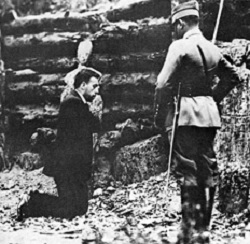
3. Fr. Miguel Pro Juárez, d. 1927
This strategic approach on the part of the tyrant is evident in the martyrdom of Fr. Miguel Pro Juárez. The Church in Mexico was branded by the protagonists of the Mexican revolution as a reactionary force and, thereby, driven underground. In November of 1927, Fr. Miguel, himself, was arrested and executed, not ostensibly as a priest, but under the clearly fallacious pretext that he was party to an assassination attempt on the President. His persecutors meticulously recorded his execution, and published the pictures the following day on the front page of the national newspapers. They hoped to frighten the Church, and its supporters, into submission, though (predictably) the opposite happened. So much so, that eventually the publication of the photos was criminalized. Satan and his minions have never fully understood the dynamics of martyrdom.
The often indirect character of the attack is important to note. Something similar, though as yet less violent, is going on today in the West. A frontal attack on Christianity is rare, but Christians are commonly accused of being intolerant or ‘bigoted’ (especially in regard to issues of morality) and they are, thereby, seen as unsuitable citizens of the modern society.
There is, of course, some truth to the counter-revolutionary charge. Once a movement begins to deny the innate dignity of the human person, or the supernatural purpose of human life, then the Church is counter-revolutionary, and vociferously so.
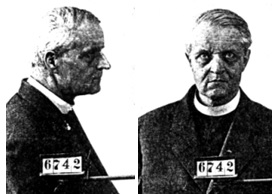
4. Pavel Gojdič, d. 1960
Another common point of conflict is that the Church gives to its members an allegiance that transcends the borders of the modern State. This explains why, in not a few cases, bishop-martyrs of the communist era were offered a way out if they would become the head of a nationalized Church: something reminiscent of the third temptation of Christ. Bishop Dr. Szilard Bogdanffy was offered a position as head of a newly created Romanian Catholic Church, independent of Rome. He refused and died in solitary confinement in 1953. Over the border in Czechoslovakia, Bishop Pavel Peter Gojdic, head of the Greek Catholic Church, was offered freedom if he would agree to become the head of the Orthodox Church in that country. The Orthodox Churches, being more nationally constituted, were often seen by the authorities as more ‘manageable’. He refused and died in prison from illness exacerbated by his confinement.
It is clear, then, that the odium fidei may sometimes be indirect, yet it must always be present for us to speak of a martyr. In the words of Benedict XVI it is “necessary, directly or indirectly but always in a morally certain way, to ascertain the ‘odium fidei’ of the persecutor. If this element is lacking, there would be no true martyrdom according to the perennial theological and juridical doctrine of the Church.”4
A particularly interesting case is that of Maximillian Kolbe, who gave his life in place of a prisoner who had been condemned to death in Auschwitz. Paul VI had beatified him as a confessor since it was not at first sight clear in what sense his killers acted out of a motive of odium fidei. John Paul II constituted a commission to consider this issue, which also decided in favour of ‘confessor’, rather than ‘martyr’. Nevertheless, at the Mass for his canonization, John Paul II emerged with red, not white, vestments. Using his apostolic authority, he declared Kolbe to be a martyr.
In his homily on that day, John Paul II explained that the Nazis manifested “a systematic contempt for man and all that is divine in man.”5 Yet, in offering his life for another and testifying to the inherent dignity of man, Kolbe drew to himself the full force of this contempt. In essence, he died on account of a contempt about the truth of the human person, a truth that was held by Fr. Kolbe on account of his faith and, even more importantly, that can only be held in full on account of divine revelation. In this sense, we can speak of an implicit odium fidei.
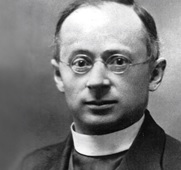
5. Fr. Otto Neurerer, d. 1940
Finally, we ought not to delude ourselves that this odium is merely a human reality or the out-working of merely human historical factors. The odium ranged against the martyrs is commonly out of all proportion with every possible perceivable offence. Take for example the case of the Austrian priest Otto Neurerer. He was sent to Dachau for opposing the marriage of a young girl to a Nazi official. In prison, he agreed to baptize a man who requested it, even though he suspected the man might be a stooge. It was his duty as a priest. For this, he was killed by being hung (some reports say crucified) upside down, dying thirty-six hours later.6
Among the most savage martyrdoms were those undergone by the Ukrainian martyrs of the 1940’s at the hands of the NKVD. These included crucifixion, disembowelling and being boiled alive.7
We have said that for martyrdom there needs to be a clash of two human beings. We should add that this drama also includes two spirits. The Holy Spirit moves the martyr but there is a diabolical spirit at work in the tyrant. St. Paul reminds us that “our struggle is not against flesh and blood, but against the rulers, against the authorities, against the powers of this dark world and against the spiritual forces of evil in the heavenly realms” (Eph 6:12). In martyrdom, this ever-present truth becomes undeniably manifest.
Testimonium fidei
Just as there can be testimonium fidei without odium fidei, there can be hatred for the faith without a matching testimony. Yet, for us to speak of martyrdom, odium and testimonium must intersect at some level and not simply run side-by-side. This clash of odium and testimonium also implies that the martyr voluntarily suffered death in witnessing to the Catholic faith. Benedict XVI reconfirmed the teaching of his predecessor (Benedict XV) that martyrdom entails: “the voluntary suffering or toleration of death on account of faith in Christ or another act of virtue in relation to God” (voluntaria mortis perpessio sive tolerantia propter Fidem Christi, vel alium virtutis actum in Deum relatum).8
Consider the case of the fourteen Christians who died in the Lahore Easter bombing of 2016. These individuals were certainly targeted as Christians celebrating a Christian festival and as ‘enemies’ of Islam. Odium is indisputable. However, there was no clear sense of a personal witness in the face of the tyrant, nor can we verify that death for the faith was voluntarily accepted.
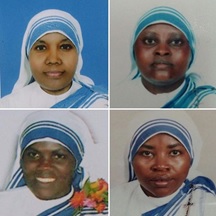
6. Srs. Anselm, Reginette, Judith, and Marguerite (MC), d. 2016
Different is the case of the four Missionary of Charity sisters killed in Yemen around the same time. They knew that they were in habitual danger and made the decision to remain in situ. They may have never met their killers before they were murdered, but, in the circumstances, simply to remain constituted a witness in the face of the tyrant and a voluntary acceptance of death.
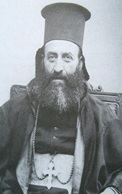
7. Flavien-Michel Malké, d. 1915
Sometimes testimony to the faith is direct, with even an ultimatum attached. Bishop Flavien-Michel Malké was a Syrian Catholic prelate killed in 1915 and beatified as a martyr by Pope Francis in 2015. During the Armenian genocide, he was arrested and given twenty-four hours to convert to Islam in order to be saved. Refusing, he was beaten and beheaded.
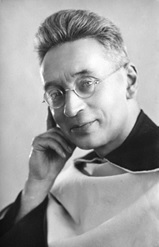
8. Titus Brandsma, d. 1942
At other times, there is no moment of decision. Rather, the day-in-day-out testimony of the martyr puts him or her on a collision course with the tyrant. A good example of this is the Dutch Carmelite, Titus Brandsma. Living in the Netherlands during the Nazi occupation, he was known to the German authorities as a dissenter. He was arrested after hand-delivering a letter from the Dutch Bishop Conference to every Catholic newspaper editor, forbidding Catholic newspapers to publish official Nazi statements. Sent to Dachau, and having fallen ill, he was killed by lethal injection as part of a human experimentation program.
Sometimes the confession is clearly dogmatic in character. The twenty-one Coptic Christians who died at the hands of ISIS in Libya in 2015 certainly died confessing their belief in both the divinity of Christ and in Christ as the saviour of the human race. After all, their killers (as Muslims) would claim to respect Jesus, but certainly not as God. Moreover, as motivation for murder, the killers explicitly focused on the Christian belief in Christ’s saving death, since they spoke of “chopping off the heads that had been carrying the cross delusion for a long time.”9
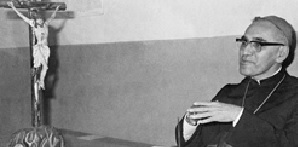
9. Ocsar Romero, d. 1980
At other times the testimony is one of action. A well-known example of this is Oscar Romero, the Archbishop of San Salvador. He was assassinated in 1980 by a government sponsored hit-man after opposing the massive human rights violations of the incumbent administration in his popular radio-broadcasted homilies. Pope Francis very recently declared Romero a martyr and on the basis that martyrdom can occur not just in defence of dogmas of the faith but also on account of “having done the works which Jesus commands with regard to one’s neighbour.”10 This fits in well with the classic statement of Benedict XV that the testimony on the side of the martyr can be either of faith in Christ “or another act of virtue in relation to God” (vel alium virtutis actum in Deum relatum). The virtue at stake here being, perhaps, justice or fortitude. This also echoes the sentiment of St. Thomas who says that “all virtuous deeds, inasmuch as they are referred to God, are professions of the faith whereby we come to know that God requires these works of us, and rewards us for them: and in this way they can be the cause of martyrdom.”11
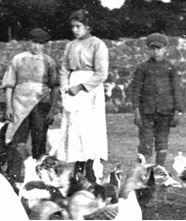
10. Maria Goretti, d. 1902
Another category of martyrdom recognized more frequently in recent times are those women who have died resisting rape. The most famous in this category from the twentieth century is Maria Goretti. But Maria is not alone, she is joined by at least eight other women (now beatified) who died in a similar situation.12
In what sense are these women martyrs? In two cases – those of Sr. Marie-Clémentine and Sr. Lindalva – their resistance can be understood in terms of them defending their religious vow of chastity which, in turn, signifies their consecration to God. Sr. Marie-Clémentine was kidnapped by soldiers during the Congolese civil war in 1964. She was pressured by a Colonel to ‘marry’ him and when she refused was bayoneted to death. Her resistance is a clear testimony of her consecration as a bride of Christ and, by this, is clear testimony to faith in Christ and to his divine prerogatives.
But, what about the other women, not so consecrated? First, we ought to note that it is not necessary for a woman to resist a would-be rapist to the point of death in order to avoid sin. Interior resistance alone is sufficient. Therefore, it would be wrong to focus too intently on the issue of the protection of virginity, though undoubtedly virginity is a thing to be prized by both men and women alike, before marriage. Second, it is not so easy to apply here the notion of “an act of virtue in relation to God,” since virginity is not an action and there is little sense in speaking of an act of chastity when to be raped in not to be unchaste.
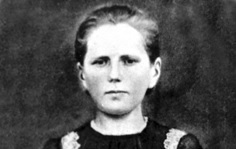
11. Karolina Kózka, d. 1914
In his homily at the canonization of Karolina Kózka, John Paul II indicates a better way to understand the veneration of the Church for these women. Karolina, a sixteen-year-old Polish girl, was shot and killed while resisting rape by a Russian soldier in 1914. The pope said that “she was aware of the dignity that man has in Christ. She lived in this awareness and matured in it. In this same consciousness she finally gave her young life, when she had to give it, to defend her dignity as a woman.”13
John Paul II’s point seems to be that these young women died witnessing to a truth that they held on account of their belief in Christ – namely, the dignity of a woman – and (as we saw with the case of Fr. Kolbe) it is a truth that, at the end of the day, is only solidly founded on revelation: on the Catholic faith. In this way, resistance unto death was a testimony to the faith.

12. Albertina Berkenbrock, d. 1931
Finally, it is worth noting something of the obscurity of these (as of other) martyrs. This is manifest by the fact that in the case of Albertina Berkenbrock (who died in 1931) we have no surviving photograph. Albertina was just eleven when she was killed resisting rape by an employee of her father. Her assassin tried to blame another man. But when the assassin approached Albertine’s body during the Wake, blood flowed from a stab wound in her neck. The falsely accused man was brought to the body and made to swear his innocence upon it and upon a crucifix. When he did, the wound miraculously healed.14
Yet, despite their obscurity and humble origins, these martyrs have obtained an ‘inexplicable’ renown in the Church. Benedict XVI points to this as one of the signs by which the Church recognizes authentic sanctity. When this fame is spontaneous and not artificially manufactured, it is an indication, he tells us, of the action of God who “points out those who deserve to be set on the lamp stand to ‘give light to all in the house’ (Mt 5:15).”15
The paucity of photographic evidence might also give us the impression that these martyrs are just very ordinary people, caught up in extraordinary circumstances. This seems to be, ultimately, incorrect. Rather, each of them lived an exemplary life and manifested extraordinary piety long before the final and ultimate moment of witness. Martyrdom simply crowned the holiness that was already present, it did not constitute it. That seems to be the common story of the martyr.
A final ‘category’ of martyr is what might be called the martyr of the moral absolute. John Paul II discusses this in Veritatis Splendor, which (somewhat surprisingly) constitutes the most extensive treatment of martyrdom in any of his writings. Here, the pope is thinking of those who are killed because they refuse to compromise with evil in situations where the evil is something proscribed by natural law. But how is this a testimony to the faith, one might ask, seeing as the natural law can be known without revelation and by unaided human reason? At least two points seem pertinent. First, the martyr receives the law as the will of the divine lawgiver. Second, the martyr understands his moral life as an intrinsic part of his life in Christ. On account of each, reverencing the moral law is a witness to the faith.
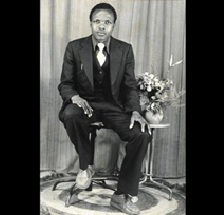
13. Benedict Daswa, d. 1990
Blessed Benedict Daswa is an example of a martyr of the moral absolute. This South African father of eight, coached a local soccer team in his “spare time.” When the team wanted to use superstitious practices to enhance their results, he refused to cooperate and resigned, going on to start his own team as a service to the community. But he had made enemies. One evening, while helping an elderly hitch-hiker get home to his family, he was mobbed by an angry crowd and stoned to death.
The witness of martyrdom, then, is clearly broad and takes into its scope both doctrine and action. And yet, it seems fair to say that all martyrs ultimately die in testimony to a dogma – to the dogma of the resurrection of Christ and of those who live in Him. Their martyrdom says something like this: “you can kill me, but there is another who has been raised from the dead. I put my trust in Him and His promise to raise me from the dead. I will not yield.”
Conformity to Christ
It is quite clear that the foremost criteria for martyrdom are odium fidei and testimonium fidei. But, further reflection indicates that we need to add to this one more factor: conformity to Christ and to His Passion. We can see why this is the case if we considers the situation of a Catholic soldier who dies in battle while defending his country or fellow Christians from an aggressor. Such a man is brave and virtuous but he is not commonly held to be a martyr. Certainly, Urban II gave a plenary indulgence to Crusaders that died for the cause, but he did not call them martyrs. The reason is that they lack a key element of Christ’s Passion, namely having violence done onto one, without retaliation. Here we come across a major difference between the Christian and the Islamic notion of martyrdom. Islamic martyrdom explicitly includes the notion of dying while actively taking part in violent jihad. The Koran says of the martyrs that “they fight in His cause, and slay and are slain” (Quran 9:111).
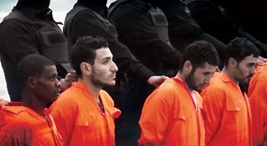
14. Mathew Ayairga, d. 2015
‘Baptism of blood’ is founded on this conformity. This phrase points to an unbaptized person who dies witnessing to Christ and who, on account of this singular conformity to Christ’s death, thereby receives all the effects of His Passion: effects that are normally given to us only in sacramental Baptism. It seems that there is such a case among the twenty-one Coptic Christians killed by ISIS. After the event, it transpired that one of the men, Mathew Ayairga, was unbaptized. Yet, reports indicate that when he was offered his life were he to convert to Islam, having seen the faith of his fellow (Christian) captives, he replied, “Their God is my God.”16 For this he died.
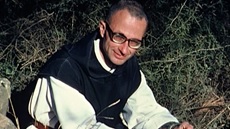
15. Christian de Chergé, d. 1986
Another aspect of conformity to Christ common to the martyrs (and again contradistinguishing them from Islamic and political ‘martyrs’) is the forgiveness they offer to their persecutors. A striking example of this is Christian de Chergé, a Trappist monk who, in 1996, was kidnapped and beheaded by Islamic insurgents in Algeria (along with six of his brothers). Suspecting that this would soon be his fate, a little before the event, he wrote the following lines in his diary:
[F]or this life lost, I give thanks to God. In this “thank you,” which is said for everything in my life from now on, I certainly include you, my last-minute friend who will not have known what you are doing… I commend you to the God in whose face I see yours. And may we find each other, happy “good thieves” in Paradise, if it please God, the Father of us both.17
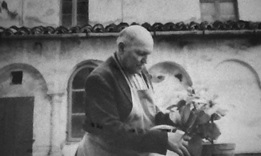
16. Alexandro Serenelli d.1970 (killer of Maria Goretti)
There is also the likeness that is entailed in being a co-redeemer. Alexandro Serenelli died as a lay brother in a Capuchin monastery. But sixty years earlier he had tried to rape and finally killed Maria Goretti. Three years after her death, Maria appeared in a dream to a still yet unrepentant Alexandro, while he languished in prison. According to Alexandro’s testimony she handed him a bouquet of lilies (the symbol of purity) – fourteen in number to match the number of times he had stabbed her. These turned to fire in his hand and Maria said “Alessandro, as I have promised, your soul shall someday reach me in heaven.”18 This began a radical change of heart on the part of Alexandro.
In his Last Will and Testimony, Alexandro explains the providential place of Maria in his life. An explanation that understands Maria’s mission as precisely ordered to the salvation of this murderer and would-be-rapist:
I’m nearly 80 years old. I’m about to depart. Looking back at my past, I can see that in my early youth, I chose a bad path which led me to ruin myself . . . when I was 20 years-old, I committed a crime of passion. Now, that memory represents something horrible for me. Maria Goretti, now a Saint, was my good Angel, sent to me through Providence to guide and save me.19
This idea of mediating salvation through martyrdom – becoming a co-redeemer by a singular conformity to the passion of Christ—is powerfully expressed in the account of the martyrdom of St. Felicity. Having suffered in giving birth in prison, the gaoler taunts her, asking how she will bear the torments of martyrdom if she could barely cope with child-birth. To this, she replied “Now it is I that suffer what I suffer; but then Another will be in me, who will suffer for me, because I also am about to suffer for Him.”20
Finally, it is important to note that, in their own passion, the martyrs are conformed to Christ primarily on the side of love and only secondarily in pain. Some martyrs have died in the most excruciating agony; some by a sudden and single gunshot. What unites them all is that “they loved not their lives even unto death” (Rev 12:11) but loved their God (and on account of God, their neighbour) all the way “to the end” (John 13:1).
In his book Memory and Identity, John Paul II talks about the limits placed on evil by divine providence. Martyrdom seems like such a limit. Martyrdom is like the turning of the tide. At one level, it is the moment when evil seems to reign supreme: the good man dies helpless at the hands of the merciless tyrant. And yet, it is precisely at this moment that the full fury of evil is swallowed up by love.
Martyrdom and us
While the Church glories in Her martyrs – they are her crown-jewels, so to speak – there is no sense in which She encourages her children to actively seek this form of witness. The situation is perhaps, analogous to a religious vocation – it is a gift from God. Perhaps, He gives these gifts for the asking, I am not sure, but we ought never to try to force God’s hand in such matters. Like a good lover, we must wait upon the beloved until He makes clear to us the gift that would be most pleasing to Him. This seems to be the sense of the well-known story of Maximillian Kolbe who, in childhood, is offered by Mary either the gift of consecrated virginity or of martyrdom. He asked for, and received both: but as gifts.
We see also that the martyrs often prudently avoided the moment of conflict. There is humility in this because the martyr knows that he ought not to orchestrate his death, since he has not within him the strength to hold firm. All this is very clear in the Martyrdom of St. Polycarp. Polycarp is persuaded to hide from those who are seeking his life, thereby following the Lord’s own admonition that “if they persecute you in one city, take refuge in another” (Matt 10:23). The persecutor must come to him, not vice versa, even after a prophetic dream in which, by his pillow catching fire, he is convinced he will die at the stake. Polycarp’s reserve is contrasted with a certain Christian named Quintus who boldly delivers himself up to the authorities, and then finds that he does not have the strength to remain loyal to Christ under the torments.21 There is, perhaps, a message here for the modern Catholic who finds himself more and more at loggerheads with the secular authorities and who would be tempted into ‘gesture politics’. Where possible, we ought quietly to go on doing what is right and ought not needlessly to draw to ourselves ‘the eye of Sauron.’ Of course, the time for war can come.
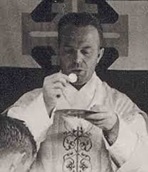
17. Jakob Gapp, d. 1943
A more modern example of this holy caution is the Austrian priest, Jakob Gapp. As a teacher in a school at Graz during the war, he refused to wear a swastika or greet people with “Heil Hitler.” Influenced by Pius XI’s Mit Brennender Sorge, he preached against Nazism as both inhuman and anti-Christian. He was removed by his superiors to the safety of Bordeaux and later, when France fell, to Spain. In each place he continued his duties as a Marist priest. He was befriended by two Gestapo officers who pretended to be Jews seeking instruction in the faith. Lured near to the French border, he was kidnapped and taken to Berlin, where he was beheaded by guillotine in August of 1943.22
The motto of the martyrs seems to be “seek first the Kingdom of God . . . and these other things will be added on to you” (Matt 6:33). Here again, we see something of the contrast between the Christian and the Islamic attitude towards martyrdom. The Islamic tradition seems much more inclined to a positive promotion of martyrdom (even recruitment) as something to be desired and sought in itself. Mohammed himself is reported to have said: “I would love to be martyred in Allah’s Cause and then get resurrected and then get martyred, and then get resurrected again and then get martyred and then get resurrected again and then get martyred.”23

18. Jesus with chalice by Pieter van Mol (1599-1650)
To say that martyrdom is a gift is to say that (in the plan of providence) it is not every Christian that is called to lay down his life for the faith. And yet, all are called to be perfect, and there can be no perfection unless we are ready for this ultimate act of love for Christ.
In fact, this readiness is implicit in the act of Christian initiation. By baptism, we are sacramentally inserted into the death of Christ with the caveat that we are prepared to be conformed to his death physically. This conditional commitment to martyrdom (conditioned upon the will of God) is compounded by the Sacrament of Confirmation and of the Eucharist. Jesus says to the Sons of Zebedee, “can you drink the cup that I will drink?” It seems that every time we go to Holy Communion, to the question “can you drink,” (along with these two Apostles) we answer, “we are able!” (Matth. 20:22).
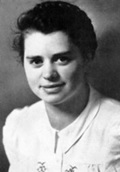
19. Josefa Mack, d. 2006
A striking example of readiness is Josefa Mack. She was just fifteen years old at the outbreak of World War II. While working in a children’s home run by The School Sisters of Our Lady, she was asked to visit Dachau Concentration Camp in order to buy herbs from a plantation that was manned by imprisoned Catholic priests. The camp authorities profited from this “enterprise.” One thing led to another. She began to smuggle food into the camp and, at undeniable risk to her own life, letters from the prisoners to outside contacts including the Cardinal Archbishop of Munich, Michael von Faulhaber.
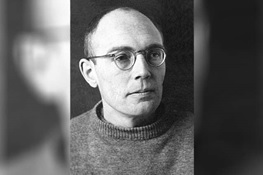
20. Karl Leisner, d. 1945
By means of this correspondence (to and fro) she helped organize the ordination of a terminally ill deacon by the name of Karl Leisner in the camp. She smuggled in letters authorizing the ordination, as well as liturgical vestments. Leisner was ordained by the French bishop of Clermont-Ferrand, Monsignor Gabriel Piguet, himself imprisoned for hiding Jewish children at a Catholic boarding school. It was known by the Church authorities that Leisner was terminally ill, but in testimony to the value of even one Mass (Fr. Leisner celebrated a single Mass in his priestly life) in the midst of unimaginable suffering, the ordination was sanctioned and carried out.
Fr. Leisner died three months after the liberation of Dachau, due to the tuberculosis he had contracted in the camp, on account of being so maltreated. He was beatified as a martyr by John Paul II in 1996. Josefa became a religious sister and died in 2006. Both Karl Leisner and Josefa Mack answered “I can” to the Lord’s question. One was sent down the road taken by James, the other by John. Josefa was not asked to make the ultimate sacrifice, but on account of her readiness, she helped gain for the Church a priest and a martyr.
Yet, one might legitimately ask, what is the content of this readiness for us in our time and place? It seems to me that one can answer this by imagining the content of the life of the men and women here mentioned, had providence not brought them into contact with their persecutor. It would be a life based on uprooting sin, fulfilling commitments to God, doing their duty to the dotting of the last ‘i’ and the crossing the of last ‘t’, passing on the faith to those around them, proclaiming the Gospel in and out of season, being uncompromising with evil, and so on.
Basically, ‘readiness’ means embracing whatever place God has assigned to us in the Mystical Body. It is by this that we best support – like Josefa Mack – those other members of the Body who will be called to bloody martyrdom. It is also by this readiness that we will share in their joy and glory in heaven – and it is by this readiness that we will have at least a small candle to hold up next to theirs.
- Tertullian, Apologeticus, Chapter 50. ↩
- Benedict XVI, Letter to the Participants of the Plenary Session of the Congregation for the Cause of the Saints, 24 April 2006. ↩
- Cf. Robert Royal, The Catholic Martyrs of the Twentieth Century (New York: Crossroads Publishing, 2000), 11. ↩
- Benedict XVI, Letter to Congregation for Cause of the Saints, 24 April 2006. ↩
- John Paul II, Homily for Canonization of Maximillian Kolbe, 10 October 1982. ↩
- “Biographies of New Blesseds – 1996” (see, ewtn.com/library/MARY/bios96.htm, accessed 1 October 2016). ↩
- Cf. “The New Martyrs of the Ukrainian Greco-Catholic Church” (royaldoors.net/2013/08/the-new-martyrs-of-the-ukrainian-greco-catholic-church/, accessed 1 October 2016). Consider especially the deaths of Fr. Yakim Senkivsky and Fr. Zenovy Kovalysk. ↩
- Benedict XVI, Letter to Congregation of Causes, 24 April 2006. ↩
- “Video shows beheading of Copts at IS hands” (english.ahram.org.eg/News/123128.aspx, accessed 1 October 2016). ↩
- Robert Ellsberg, “Raised to the Altars: One Who Fell for the Poor,” The Tablet 21 May 2015. (thetablet.co.uk/features/2/5595/raised-to-the-altars-one-who-fell-for-the-poor, accessed 1 October 2016). ↩
- St. Thomas Aquinas, Summa Theologiae, II II q.124 a.5. ↩
- Karolina Kózka (Poland, 1914), Albertina Berkenbrock (Brazil, 1931), Antonia Mesina (Italy, 1935), Teresa Bracco (Itlay, 1944), Anna Kolesarova (Slovakia, 1945), Sr. Marie-Clémentine Anuarite Nengapeta (Congo, 1964), Pierina Morosini (Italy, 1957), Sr. Lindalva Justo de Oliveira (Brazil, 1993). ↩
- John Paul II, Homily at the Mass for the beatification of Karolina Kozka, 10 June 1987. ↩
- Cf. vatican.va/news_services/liturgy/saints/ns_lit_doc_20071020_berkenbrock_en.html (accessed 1 October 2016). ↩
- Benedict XVI, Letter to Congregation for the Causes of the Saints, 24 April 2006. ↩
- persecution.com/public/newsroom.aspx?story_ID=%3D373535, accessed 1 October 2016. ↩
- Johann Christoph Arnold, “Christian de Chergé: A Story of Forgiveness” (plough.com/en/topics/life/grieving/christian-de-cherge-a-story-of-forgiveness, accessed 1 October 2016). ↩
- Pietro Di Donato, The Penitent (N.Y.: Hawthorne Books, 1962), 109-110. ↩
- Cf. mariagoretti.org/alessandrobio.htm, accessed 1 October 2016. ↩
- Cf. Alvaro de Silva, “Martyrdom and Christian Morality,” Communio 21.2 (1994): 294. ↩
- The Martyrdom of Polycarp (newadvent.org/fathers/0102.htm, accessed 1 October 2016). ↩
- Cf. marianist.org/site.php?menuaccess=34, accessed 1 October 2016. ↩
- Cf. mobile.ahadith.co.uk/chapter.php?page=2&cid=140, accessed 1 October 2016. ↩
Exceptional and challenging essay, Dr. Newton. Thank you!